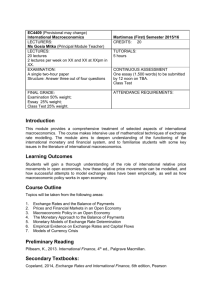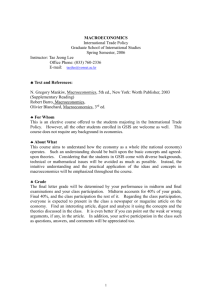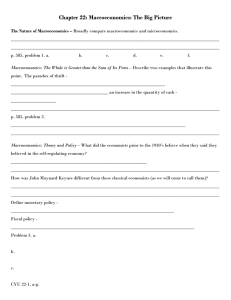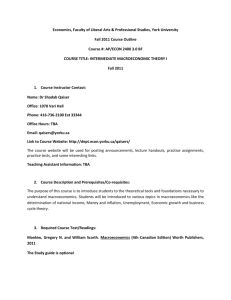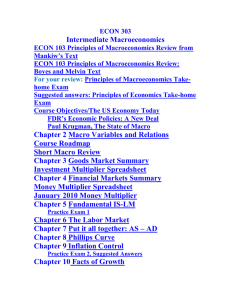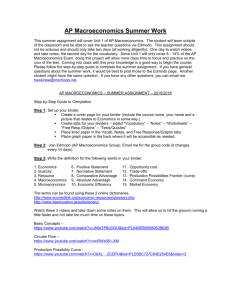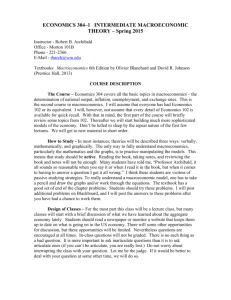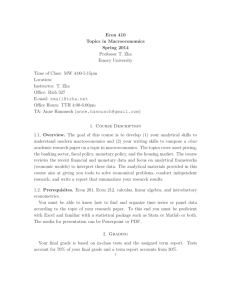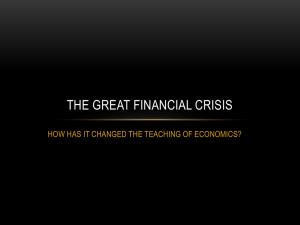Macroeconomics, 1st semester 2015
advertisement
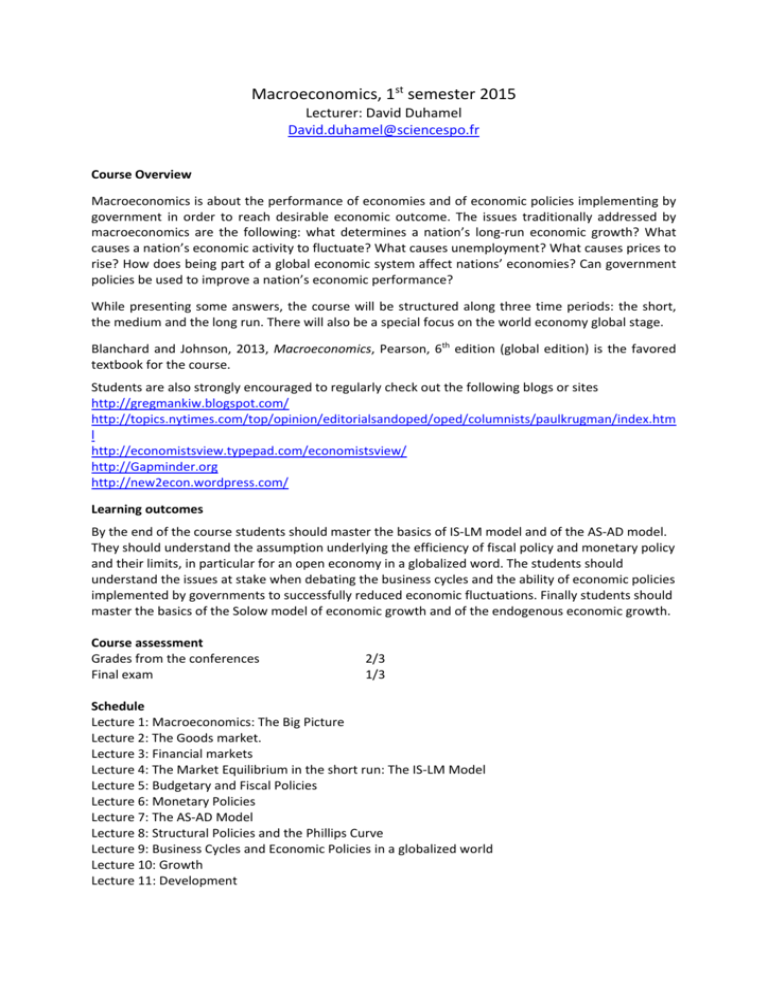
Macroeconomics, 1st semester 2015 Lecturer: David Duhamel David.duhamel@sciencespo.fr Course Overview Macroeconomics is about the performance of economies and of economic policies implementing by government in order to reach desirable economic outcome. The issues traditionally addressed by macroeconomics are the following: what determines a nation’s long-run economic growth? What causes a nation’s economic activity to fluctuate? What causes unemployment? What causes prices to rise? How does being part of a global economic system affect nations’ economies? Can government policies be used to improve a nation’s economic performance? While presenting some answers, the course will be structured along three time periods: the short, the medium and the long run. There will also be a special focus on the world economy global stage. Blanchard and Johnson, 2013, Macroeconomics, Pearson, 6th edition (global edition) is the favored textbook for the course. Students are also strongly encouraged to regularly check out the following blogs or sites http://gregmankiw.blogspot.com/ http://topics.nytimes.com/top/opinion/editorialsandoped/oped/columnists/paulkrugman/index.htm l http://economistsview.typepad.com/economistsview/ http://Gapminder.org http://new2econ.wordpress.com/ Learning outcomes By the end of the course students should master the basics of IS-LM model and of the AS-AD model. They should understand the assumption underlying the efficiency of fiscal policy and monetary policy and their limits, in particular for an open economy in a globalized word. The students should understand the issues at stake when debating the business cycles and the ability of economic policies implemented by governments to successfully reduced economic fluctuations. Finally students should master the basics of the Solow model of economic growth and of the endogenous economic growth. Course assessment Grades from the conferences Final exam 2/3 1/3 Schedule Lecture 1: Macroeconomics: The Big Picture Lecture 2: The Goods market. Lecture 3: Financial markets Lecture 4: The Market Equilibrium in the short run: The IS-LM Model Lecture 5: Budgetary and Fiscal Policies Lecture 6: Monetary Policies Lecture 7: The AS-AD Model Lecture 8: Structural Policies and the Phillips Curve Lecture 9: Business Cycles and Economic Policies in a globalized world Lecture 10: Growth Lecture 11: Development
